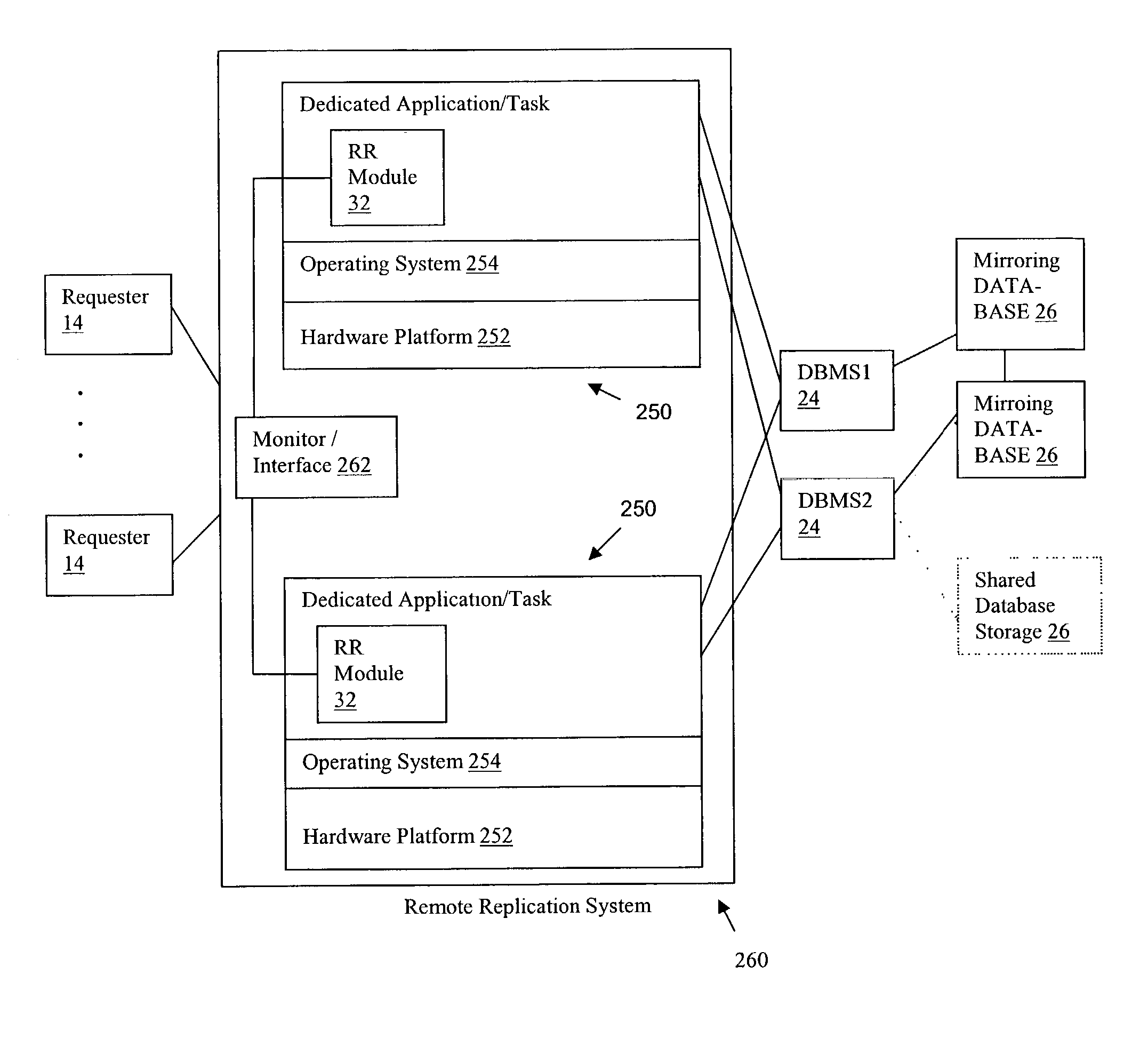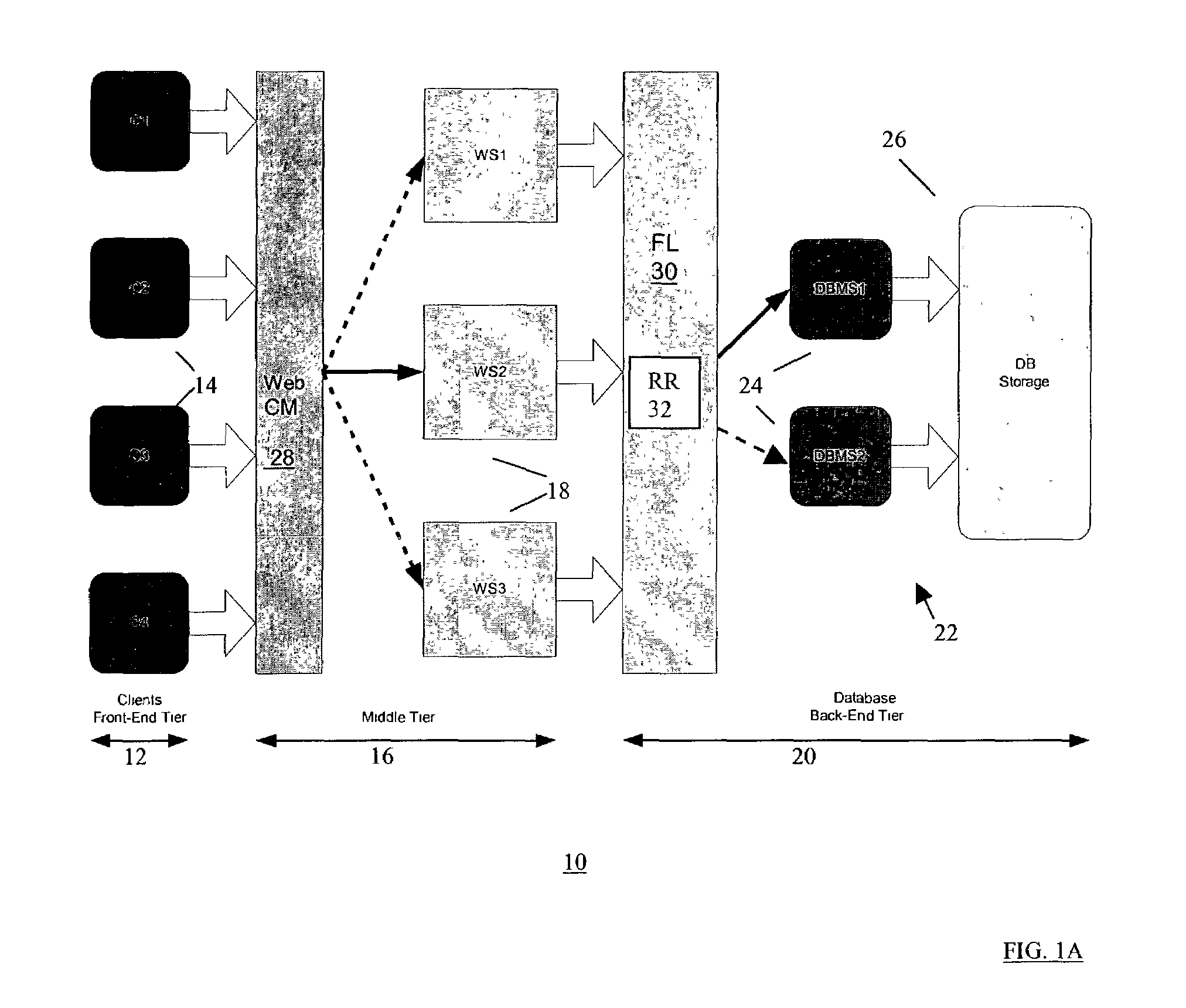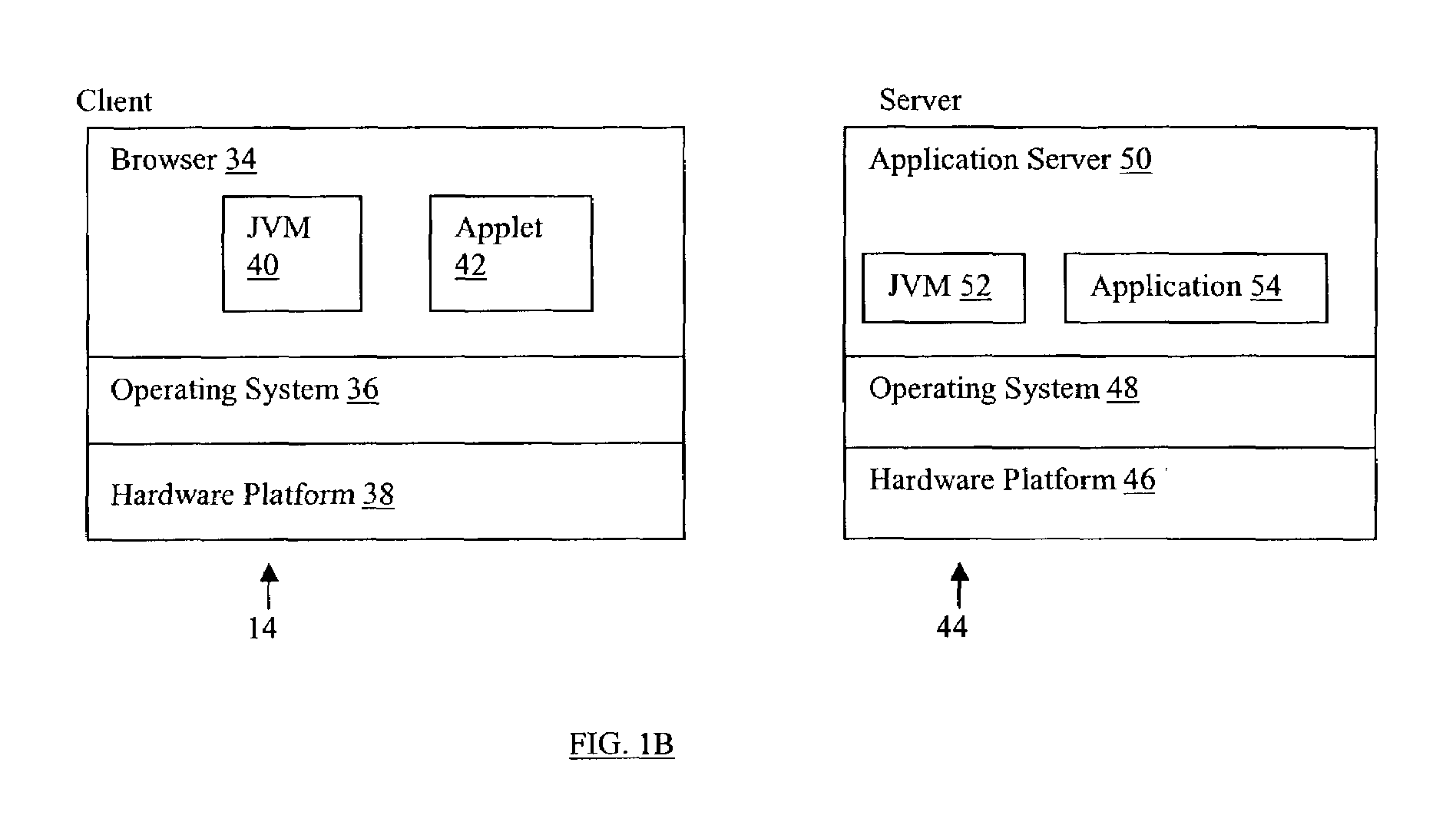Database remote replication for back-end tier of multi-tier computer systems
a database and multi-tier computer technology, applied in the field of database systems, can solve the problems of reducing the performance of the system, reducing the efficiency of the server, and not being able to adapt to changing environments and scaling with increasing user and data volume and traffic, so as to maximize server efficiency and avoid the shortcomings of conventional systems
- Summary
- Abstract
- Description
- Claims
- Application Information
AI Technical Summary
Benefits of technology
Problems solved by technology
Method used
Image
Examples
Embodiment Construction
[0027]FIG. 1A shows an example architectural block diagram of an embodiment of a multi-tier network computer system 10 according to the present invention. The computer system comprises a three-tier architecture system including a front-end tier (first tier) 12 having multiple client workstations (clients) 14 (e.g., C1, C2, C3, C4), a middle-tier (second tier) 16 including servers 18 for data processing, and back-end tier (third tier) 20 including resources such a database system 22. The middle tier 16 (e.g., application server) provides data processing and interface between the front-end tier 12 (client) and the back-end tier 20. The middle tier 16 comprises the primary interface interacting with the clients 14 located in the first tier 12, and hiding all of the functional details of the back-end tier 20 from the clients 14.
[0028]In the example three-tier architecture 10, each server 18 in the middle tier 16 comprises a middleware web server (e.g., WS1, WS2, WS3) that interacts with...
PUM
 Login to View More
Login to View More Abstract
Description
Claims
Application Information
 Login to View More
Login to View More - R&D
- Intellectual Property
- Life Sciences
- Materials
- Tech Scout
- Unparalleled Data Quality
- Higher Quality Content
- 60% Fewer Hallucinations
Browse by: Latest US Patents, China's latest patents, Technical Efficacy Thesaurus, Application Domain, Technology Topic, Popular Technical Reports.
© 2025 PatSnap. All rights reserved.Legal|Privacy policy|Modern Slavery Act Transparency Statement|Sitemap|About US| Contact US: help@patsnap.com



